The National Register of Historic Places lists over 95,000 entries, from the famous (the Statue of Liberty) to the infamous (Alcatraz Prison in San Francisco Bay) to the downright strange (a six-story elephant statue outside of Atlantic City named Lucy). Despite the extraordinary range of places that have earned a spot on the register, just 3 percent of its sites focus on the experiences of Black Americans.
Trust for Public Land supporters have long helped preserve and create public access to the outdoor spaces that tell the story of Black life in America. We’ve worked closely with communities across the country to lift up the lessons our history has to offer, and strengthen a connection to our nation’s shared heritage. Learn more and explore below.
African Meeting House (Boston, Massachusetts)
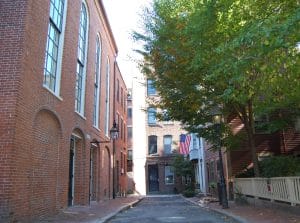
The African Meeting House was an important site in the abolitionist movement. Photo: Boston African American National Historic Site
Once a key gathering place for giants of the abolitionist movement, Boston’s African Meeting House is now the oldest remaining Black church structure in the United States—and home to the Museum of African American History, New England’s largest museum dedicated to preserving, conserving, and interpreting the contributions of African Americans. When the museum outgrew its headquarters, Trust for Public Land supporters helped it expand.
American Beach (Amelia Island, Florida)
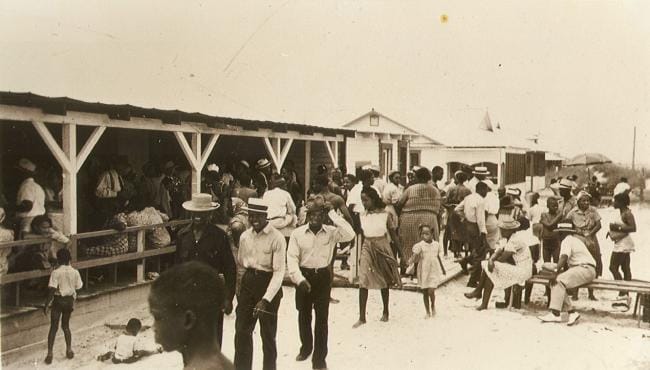
The oceanfront porch of Evans’ Rendezvous in about 1950. Photo: Amelia Island Museum of History
In Jim Crow-era Florida, most beaches were off limits to Black visitors. American Beach was an exception: founded by Abraham Lincoln Lewis, the state’s first Black millionaire, the resort thrived through the 1950s, attracting cultural icons like Ray Charles and Louis Armstrong. We helped conserve a stretch of the beachfront as public land, including the historic Evans’ Rendezvous nightclub. Nassau County recently received a grant from the National Park Service to document the historic structure.
Charles Young Buffalo Soldiers National Monument (Wilberforce, Ohio)

Charles Young led the country’s first Black cavalry. Photo: Library of Congress
The first Black colonel in the United States Army, Charles Young led the Buffalo Soldiers, the United States’ first Black cavalry, and was eventually appointed the first Black superintendent in the National Park Service, a position which he held until his death with full military honors in 1922. With our help, President Obama paid tribute to Young’s story by declaring Young’s Ohio family home a national monument in 2015.
Ebenezer Creek (Springfield, Georgia)
On December 9, 1864, hundreds of formerly enslaved people died trying to cross Ebenezer Creek, fleeing Confederate troops. Public outcry over the deaths led President Abraham Lincoln to issue orders that were intended to redistribute to formerly enslaved people 400,000 acres of confiscated coastal property in 40-acre tracts. The order was revoked by President Andrew Johnson following Lincoln’s death. We worked with the City of Springfield to protect the site of the tragedy as a historical park.
Emmett Till Campus (Chicago, Illinois)
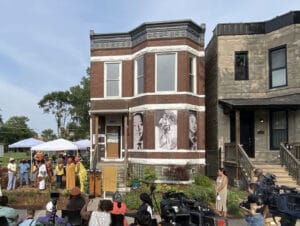
TPL is working to preserve land around the home of Emmett Till to help Americans heal from and honor a pivotal time in our nation’s history. Photo: Preservation Futures
The Emmett Till Campus on the South Side of Chicago recognizes and honors a painful and grave moment in American history—the brutal lynching of 14-year-old Emmett Till, which galvanized the civil rights movement. To keep Till’s memory alive, community members, led by local nonprofit Blacks in Green, came together to save his childhood home from demolition. Trust for Public Land then drew on contributions from our Equitable Communities Fund, the Doris Duke Charitable Foundation, and L.L.Bean to help purchase additional properties near the home, including what is now the Mamie Till-Mobley Forgiveness Garden. The garden honors Emmett’s mother, a teacher and advocate for civil rights and children’s education, and invites visitors to heal from decades of painful racism. It will serve as an anchor for 15 more gardens to come, part of the Great Migration Gardens of West Woodlawn project, which will dedicated plots to other important figures of the era, such as playwright Lorraine Hansberry and sculptor Richard Hunt.
TAKE ACTION: Help us advance the preservation of important historic places like these: sign the petition to designate the site of the Springfield Race Riot as a national monument.
The Field (Red Bank, Tennessee)
Trust for Public Land first learned of the Field, a long-forgotten burial ground, while building the White Oak Connector Trail, a .8-mile path that connects Stringer’s Ridge, a beloved natural area overlooking Chattanooga, to White Oak Park in Red Bank, Tennessee. The site is what is often called a “potter’s field” or “paupers’ cemetery,” where residents whose families couldn’t afford burial costs were interred. It was all but lost to history until two researchers happened upon it, hoping to find burial sites connected to their work. Thus, what began as a relatively straightforward project—creating a trail to connect two parks and two nearby communities—become a priority in TPL’s Black History and Culture program. We’re now collaborating with the African American Cemetery Preservation Fund, as well as the Cities of Red Bank and Chattanooga, Hamilton County, and the local community, to determine how best to restore and remember the site.
Fort George Island (Jacksonville, Florida)

The historic Broward House is part of a historic site that honors the memory of Anna Kingsley, a formerly enslaved woman who managed a plantation here in the 19th century. Photo: Jimmy Emerson
We helped the National Park Service protect 4 acres of coastal forest on Fort George Island in Florida’s Timucuan Ecological and Historic Preserve. The island was once home to a formerly enslaved woman named Anna Kinglsey, who managed a large plantation on the site in the early 1800s.
Horace King Historic Site (Whitesburg, Georgia)
Born into slavery in 1807, architect and engineer Horace King grew up to become the most sought-after bridge builder in the South during the 19th century, completing dozens of structures throughout Alabama, Georgia, and Mississippi. One of his bridges, at Moore’s Crossing on the Chattahoochee River outside of Atlanta, was ultimately burned by Union troops during the Battle for Atlanta in 1864. We protected Moore’s Bridge Park and the Horace King Historic Site in 2009.
John Brown Fort (Harper’s Ferry, West Virginia)

In 2002, TPL helped add this site to Harper’s Ferry National Historical Park. Photo: Ken Sherman
In an unassuming engine house at Murphy’s Farm in Harper’s Ferry, abolitionist John Brown and a small force of enslaved people who took shelter following their 1859 raid on Harpers Ferry. In 1906, W.E.B. Dubois and other black leaders made a pilgrimage to “John Brown’s Fort” to honor the effort during the second meeting of the Niagara Movement—the forerunner to the NAACP. In 2002, TPL helped add the farm to Harper’s Ferry National Historical Park.
Martin Luther King, Jr. National Historical Park (Atlanta, Georgia)

Guests at Martin Luther King National Historical Park in Atlanta. Photo: Christopher T. Martin
Since the late 1970s, we’ve protected more than a dozen properties around Dr. Martin Luther King Jr.’s birth home near downtown Atlanta. Today, more than a million visitors a year tour the national historical park dedicated to his life and legacy.
Meadowood (Simsbury, Connecticut)
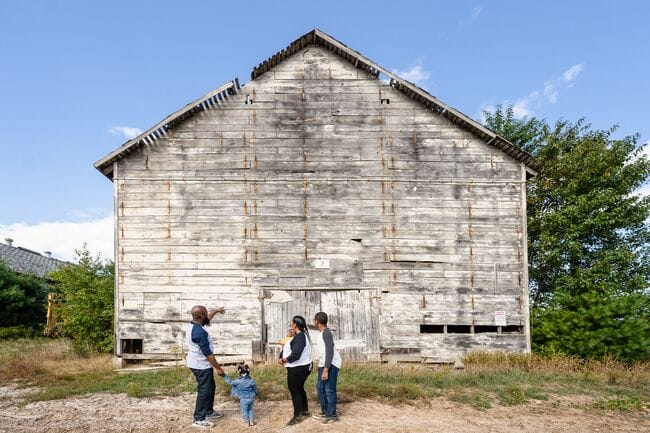
A family visits one of the historic barns at Meadowood, in Simsbury, Connecticut. Photo: Kesha Lambert
In 2021, TPL helped protect the former tobacco farm where a young Martin Luther King Jr. worked for two summers during his college years. In letters home, King described the experience as liberating and later traced his calling as a minister “to the summer of 1944 when I felt an inescapable urge to serve society.” Now that story—and the land—is permanently protected.
Medgar and Myrlie Evers Home National Monument (Jackson, Mississippi)

TPL partnered with the National Park Service and others to help to restore the former home of Medgar and Myrlie Evers and open it to the public in 2023. Photo: National Park Service
As activists on the front lines of the civil rights movement, Medgar and Myrlie Evers were repeated targets of racist violence. Their house, the site of Medgar’s 1963 assassination, was designated a national monument in 2020, but sat unopen to the public except for limited tours. In 2023, Trust for Public Land partnered with the National Park Service and others to help to restore the home and grounds and open it to the public. It is the first completed project in our Alliance for Civil Rights Historic Sites, where, in partnership with the National Park Service, community leaders, and philanthropic leaders, we’re restoring and investing in seven historic National Park Service sites in Alabama and Mississippi.
Monroe School (Topeka, Kansas)
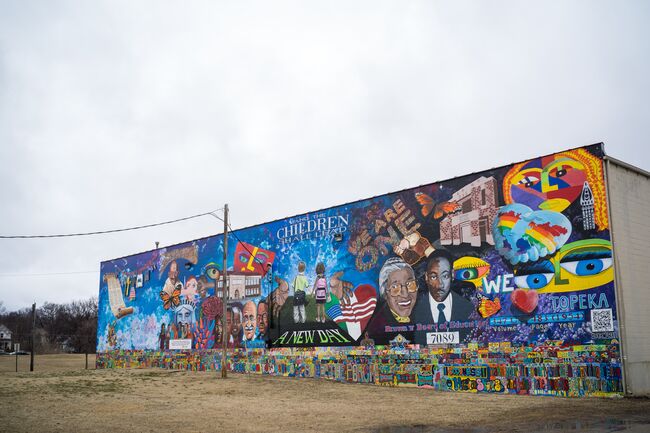
A large mural across from the Brown v. Board historic site at Monroe School depicts people and events surrounding the 1954 decision to strike down racial segregation in public schools. Photo: Ian MacLellan
This brick-and-stone schoolhouse in Topeka, Kansas, became a flashpoint of the civil rights movement through its students’ involvement as plaintiffs in Brown v. the Board of Education, the landmark 1954 Supreme Court decision that outlawed segregation in America’s public schools.
Morris Island (Charleston, South Carolina)
If you’ve seen the movie Glory, you know Morris Island: it’s the site of the Second Battle of Fort Wagner, led by the Black Union soldiers of the 54th Massachusetts Infantry. We helped purchase and permanently protect the island for the public, ensuring that the memory of the troops’ sacrifice lives on.
Nicodemus National Historic Site (Nicodemus, Kansas)
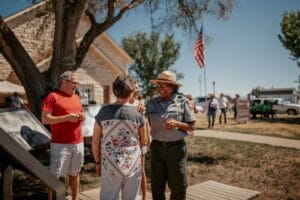
Visitors gather outside Township Hall at Nicodemus National Historic Site. Photo: Leah Evans
Nicodemus, Kansas, is the oldest—and the only remaining—Black settlement west of the Mississippi River. The site is still home to several descendants of the original settlers. An Act of Congress designated it as a National Historic Site in 1996, helping to tell the story of African Americans who played a role in our nation’s westward expansion. In 1998, we helped protect the African Methodist Episcopalian (AME) Church, built in 1885, as one of five historic buildings that are part of the National Historic Site. Now, we’re working with the National Park Service and the Nicodemus Historical Society to establish a site for a new visitor center.
Prince Hall Masonic Lodge (Atlanta, Georgia)
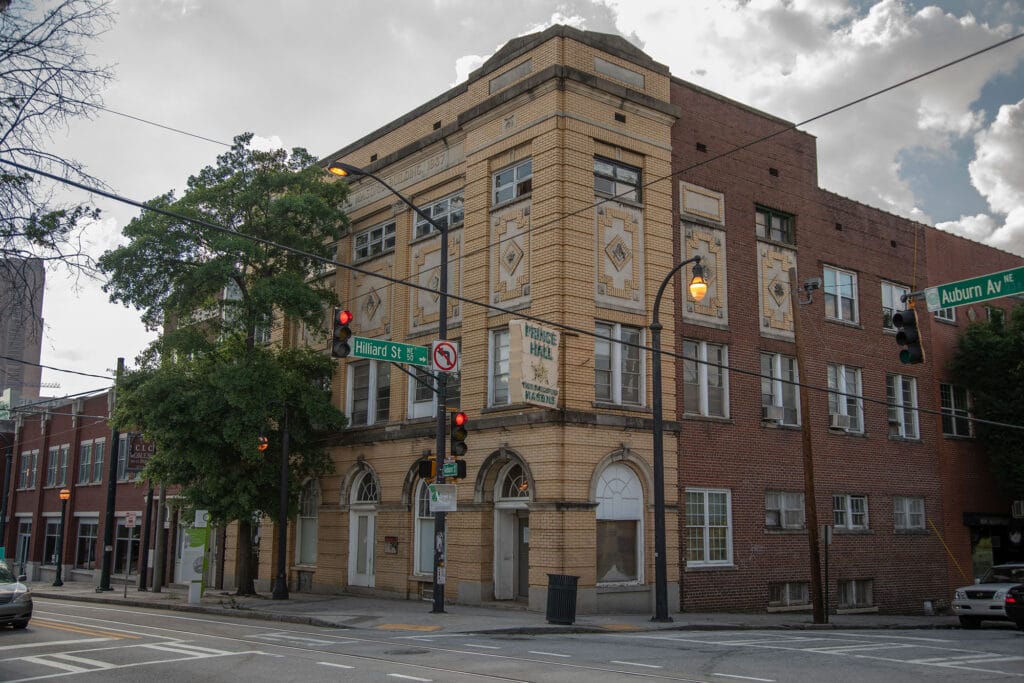
TPL is working to save and restore Prince Hall Masonic Lodge. Photo: Atlanta History Center
The Prince Hall Masonic Lodge is most famous for housing Dr. Martin Luther King Jr.’s Southern Christian Leadership Conference for four decades. Built in 1940 by John Wesley Dobbs, the lodge retains its original character due to its uninterrupted use and maintenance by Masonic leadership until 2018, but it has fallen into disrepair and is at risk of being lost. TPL has partnered with lodge leadership to restore and conserve the building and ultimately incorporate it into the Martin Luther King, Jr. National Historical Park.
Pullman National Historical Park (Chicago, Illinois)
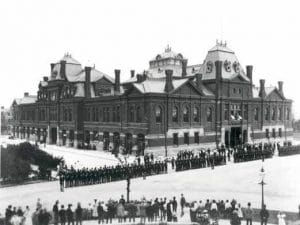
Pullman strikers outside Arcade Building in Pullman, Chicago. Photo: Abraham Lincoln Historical Digitization Project
The neat brick homes and warehouses at the Pullman National Historical Park date to the 1880s, when they sprang up as the company town and headquarters of a major railcar manufacturer. We helped the National Park Service acquire the site in the 2000s. Today, the park honors the courage and tenacity of labor leaders who strove for equal representation and safe conditions for Black workers.
Riverside Heritage Park (Princeville, North Carolina)
Princeville was the nation’s first town founded by emancipated Black people after the Civil War. In 1999, the town was devastated by flooding from Hurricane Floyd. As part of the recovery, we helped Princeville purchase 11 acres for the town’s first park.
Rodney Cook Sr. Park (Atlanta, Georgia)

Atlanta’s Cook Park features green infrastructure that has the potential to store 10 million gallons of stormwater. Photo: Julieta Vergini
In Atlanta, Vine City and nearby English Avenue have long been home to African American academic, religious, political, and business luminaries. The area boasts four prominent historically black colleges and universities. Dr. Martin Luther King Jr. lived here alongside fellow civil rights leaders. In 2022, a devastating storm and related flood destroyed dozens of homes in the area and damaged hundreds more. In the aftermath, TPL stepped in to help rebuild, partnering with the City of Atlanta to create a climate-smart park in its place. Now, Rodney Cook Sr. Park boasts plenty of green infrastructure elements such as rain gardens, native plant gardens, a 2-acre retention pond, and an engineered system that can store up to 10 million gallons of stormwater—all while providing neighbors a place to meet, play, exercise, and connect with the outdoors.
Wells’Built Hotel (Orlando, Florida)
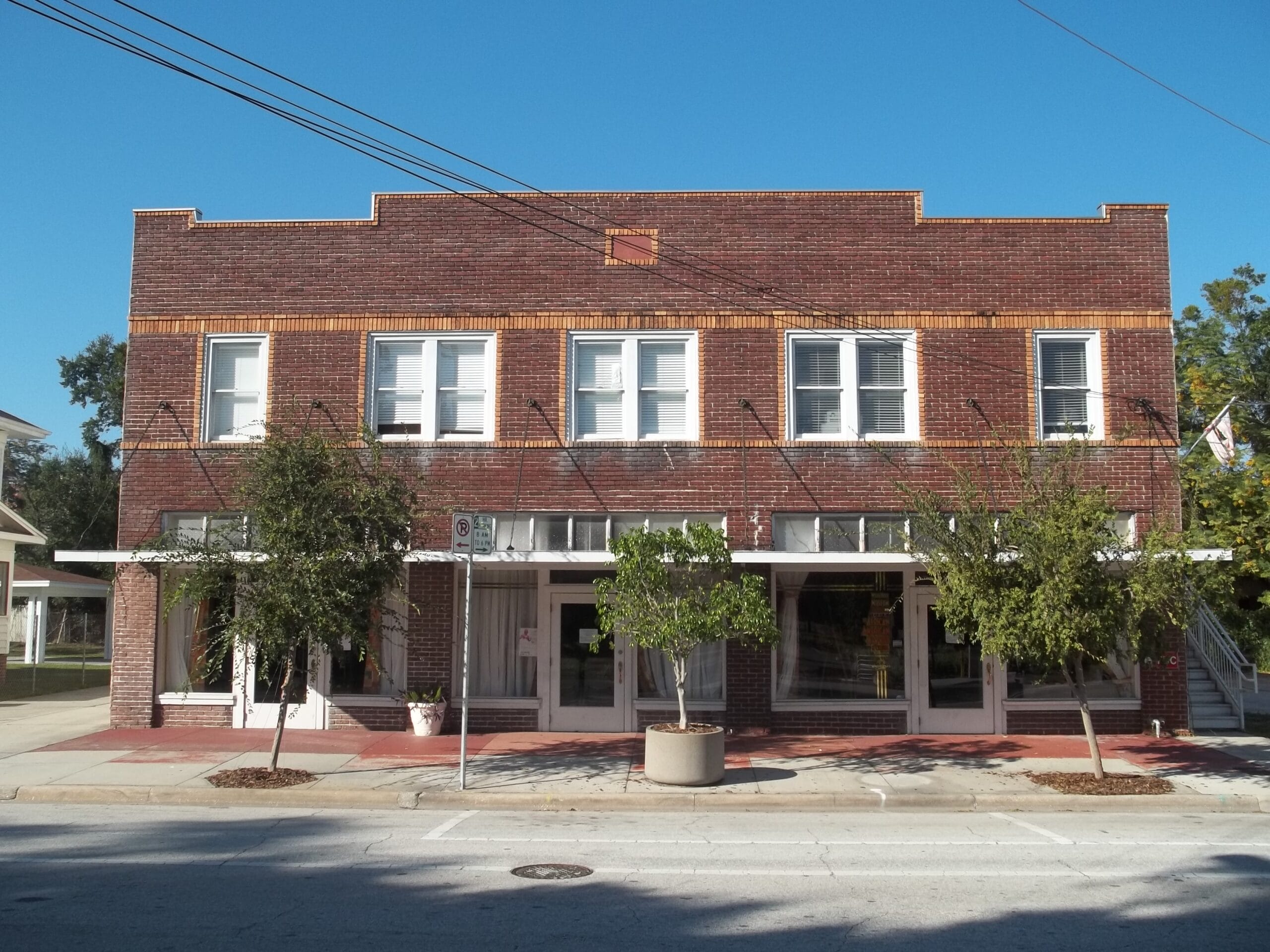
The Wells’Built Hotel, which housed a great many famous lodgers and performers, is now a historic site and museum for all to visit and learn from. Photo: Wikimedia Commons
The Wells’Built Hotel was one of the few lodgings in segregated Orlando that welcomed Black people—including celebrities such as Count Basie, Cab Calloway, Billie Holiday, Ella Fitzgerald, and Duke Ellington. We helped conserve the building, which is now a museum dedicated to African American history and culture.
Feeling Inspired?
We’re continuing to work alongside communities to preserve the places that matter and to create a more accurate and equitable public memory of American history. Learn more about our work and join us today.

